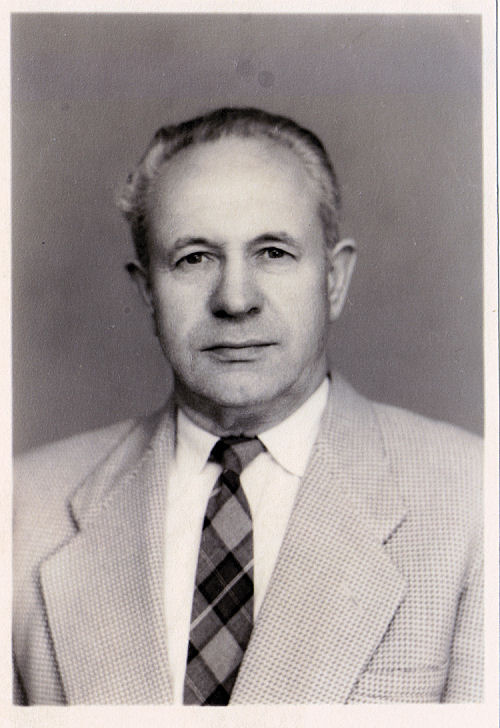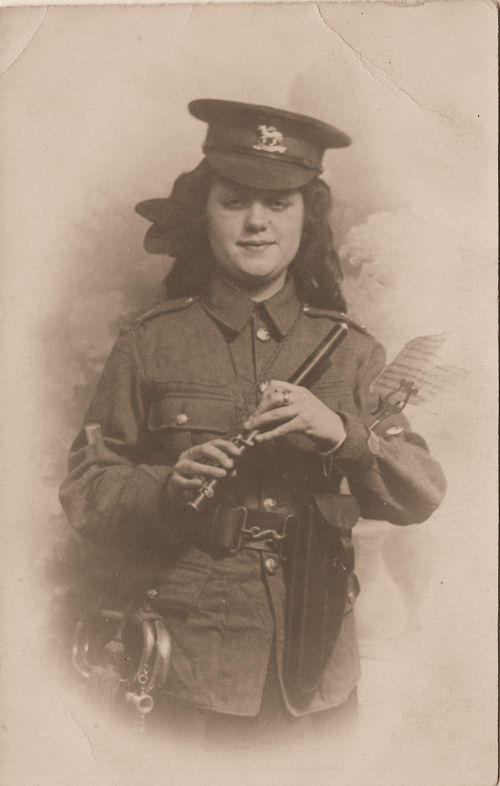
111030 Pte. John "Jack" Belfointaine's ancestral family, the Bellefontaine family through Pierre Godin dit Chatillon (a master carpenter), arrived in Montreal in 1653. Pierre's descendants went on to settle in Quebec and the Atlantic provinces. Many of them still live in Nova Scotia in a large area northeast of Halifax/Dartmouth called Chezzetcook.
My grandfather, Jack, and his sister Marie (Mary) were born in the rural community of West Chezzetcook, Nova Scotia. Their father died when they were very young leaving their mother and grandparents with the task of providing for their upbringing. Jack would always be very close to his little sister Marie for his entire life.
Military Service
According to his attestation papers, Jack was a chauffeur by trade, although driving what and for who is not known. However, this may have been his reason for joining a mounted regiment instead of the regular infantry. Enlisting in the Canadian Overseas Expeditionary Force in Halifax, Nova Scotia, on June 21st, 1915, (his 17th birthday) it is held in family folklore that the recruitment officer, in lieu of a birth certificate, had my grandfather swear on a bible that he was 19 years of age. So thanks to the regulations of the day he was taken on strength as a trooper with the 6th Canadian Mounted Rifle Regiment on July 12th, 1915. His service with the CEF began with a brief period of basic training in Valcartier, Quebec, before his unit was sent to England.
Overseas Service
The War Diary of the 6th CMR Regiment states that during this entire 3 month period from October 24th up until the New Year, it rained nearly every day and night as the men settled into the routine of route marches, inspections and parades. Each day troops of men were detailed out of the 3 Squadrons to either take turns with the instructors at the camp, occupy portions in the forward lines with one of the machine gun sections, or to be detailed to go with the engineers as work parties for the digging of new trenches. When the 6th Regiment was absorbed into the 4th and 5th CMR Battalions, Jack was taken on strength with the 4th CMR Battalion, while in the field (France) on January 3rd, 1916.
During his service with the 4th CMR, Jack was wounded twice in 3 months: the first occurred in action on June 2nd, 1916, at the Second Battle of Ypres, during what was later to be called the "Battle for Mount Sorrel". The day following the horrific German bombardment on the front line trenches, Jack reported to the 10th Casualty Clearing Station with the symptoms of shell shock and later transferred to the Convalescent Hospital at Wimereux, France. He returned to the field on July 1st, 1916; his second wounding occured following the heavy fighting of the British attack on Courcelette on September 15th 1916. Jack reported to the 4th Canadian Field Ambulance Corps on September 16th, again with the symptoms of shell shock. He was released from hospital and on October 28th returned to duty in the field.
Jack fought on for two more years without further mishap and saw action at Vimy Ridge, Passchendaele, The Battles of Ypres, The Last Hundred Days, The Battle of Amiens, The Second Battle of Arras, The Battle of Cambrai-St. Quentin and The Final Advance to Mons.
It was on December 22nd, 1917, during the Battalion's rest and refitting in France, that Jack went on a 14 day leave to the UK to marry my Grandmother, Hannah Elisabeth Ames, on December 27th, 1917, in Croydon, Surrey in England. Jack and Hannah would go on to have six children, all boys, and numerous grand and great grand children.

This whimsical picture (right) of my Grandmother, Hannah "Dolly" Ames, was sent as a postcard to her sweetheart, Jack, fighting in the trenches.
After the Armistice
During the 4th CMR's long departure from Belgium and France, Jack was granted fourteen days leave on January 26th, 1919. During his leave to England he was struck off strength with the 4th CMR Battalion and transferred to the 1st Central Ontario Regimental Depot. He left England with his English wife Hannah on board the Canadian Pacific liner "Minnedosa" at Liverpool on April 9th, 1919. He was discharged from the Canadian Expeditionary Force in St. John N.B. on April 19th, 1919, and returned to Halifax to start a new life.
Jack returned to find that Halifax had changed quite a bit from the way he remembered it. The entire north western part of Halifax, including the Richmond Area, had been destroyed in the "Great Explosion" of December 6th, 1917. Jack bought his first home at 27 Livingstone Place, in the newly rebuilt Richmond Area nicknamed the Hydrostone District. The name hydrostone comes from the local concrete like building material that was widely used in the construction of roads and the foundations of the new buildings. Later on he decided to move his family to Toronto, in the mid 1920's, to seek out better employment opportunities and started work as an auto mechanic for the Gorrie GMC dealership. Years later, when in his 50's, Jack went to work with a large engineering firm with whom he travelled to many exotic locations around the globe. I especially recall my father receiving a large package containing a Hookah and many brass trinkets sent all the way from Pakistan. He enjoyed the excitement and adventure of travelling and seeing the world first hand.
John "Jack" Joseph Belfontaine died on February 28th, 1976, and is buried in Fort Erie, Ontario.
This biography and the images are with thanks to Chris Belfontaine.